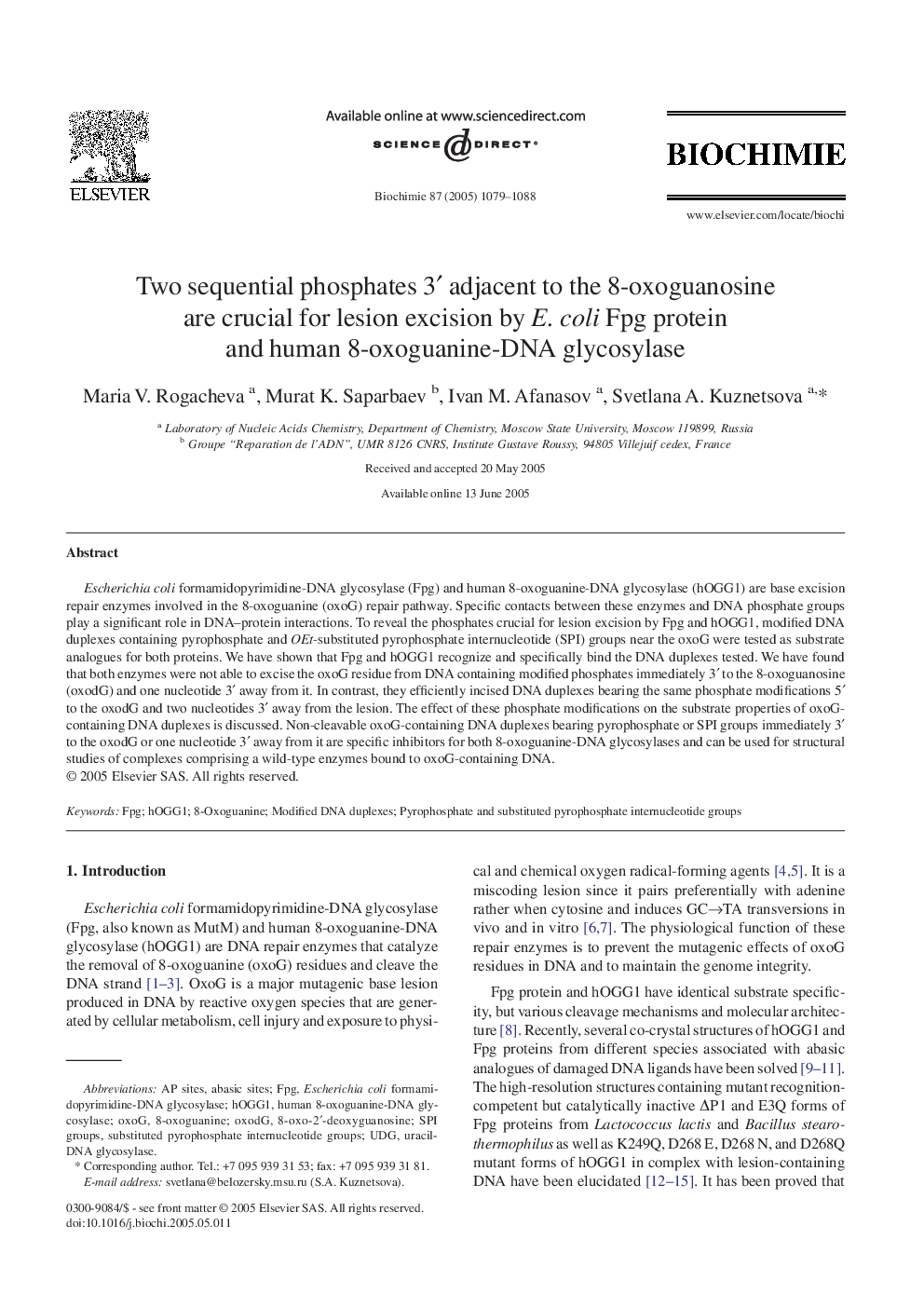| Article ID | Journal | Published Year | Pages | File Type |
|---|---|---|---|---|
| 10804480 | Biochimie | 2005 | 10 Pages |
Abstract
Escherichia coli formamidopyrimidine-DNA glycosylase (Fpg) and human 8-oxoguanine-DNA glycosylase (hOGG1) are base excision repair enzymes involved in the 8-oxoguanine (oxoG) repair pathway. Specific contacts between these enzymes and DNA phosphate groups play a significant role in DNA-protein interactions. To reveal the phosphates crucial for lesion excision by Fpg and hOGG1, modified DNA duplexes containing pyrophosphate and OEt-substituted pyrophosphate internucleotide (SPI) groups near the oxoG were tested as substrate analogues for both proteins. We have shown that Fpg and hOGG1 recognize and specifically bind the DNA duplexes tested. We have found that both enzymes were not able to excise the oxoG residue from DNA containing modified phosphates immediately 3â² to the 8-oxoguanosine (oxodG) and one nucleotide 3â² away from it. In contrast, they efficiently incised DNA duplexes bearing the same phosphate modifications 5â² to the oxodG and two nucleotides 3â² away from the lesion. The effect of these phosphate modifications on the substrate properties of oxoG-containing DNA duplexes is discussed. Non-cleavable oxoG-containing DNA duplexes bearing pyrophosphate or SPI groups immediately 3â² to the oxodG or one nucleotide 3â² away from it are specific inhibitors for both 8-oxoguanine-DNA glycosylases and can be used for structural studies of complexes comprising a wild-type enzymes bound to oxoG-containing DNA.
Related Topics
Life Sciences
Biochemistry, Genetics and Molecular Biology
Biochemistry
Authors
Maria V. Rogacheva, Murat K. Saparbaev, Ivan M. Afanasov, Svetlana A. Kuznetsova,
